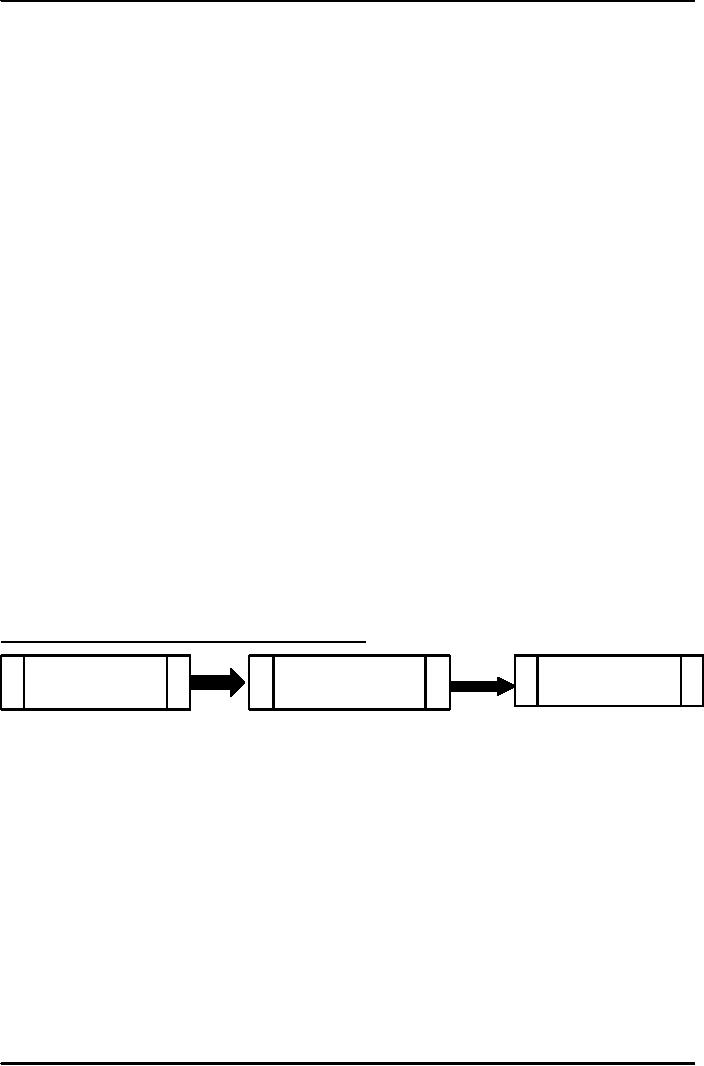 |
MEMORY I:Functions of Memory, Encoding and Recoding, Retrieval |
| << COGNITIVE APPROACH:Approach to Learning, Observational Learning |
| MEMORY II:Long-Term Memory, Declarative Memory, Procedural Memory >> |

Introduction
to Psychology PSY101
VU
Lesson
23
MEMORY
I
Memory
refers to the processes by which people
and other organisms encode,
store, and retrieve
information.
Memory is critical to humans and
all other living organisms.
Practically all of our
daily
activities--talking,
understanding, reading, and
socializing--depend on our having learnt
and stored
information
about our environments. Memory
allows us to retrieve events from the
distant past or from
moments
ago. It enables us to learn
new skills and to form
habits. Without the ability to
access past
experiences
or information, we would be unable to
comprehend language, recognize
our friends and
family
members,
find our way home, or
even tie a shoelace. Life
would be a series of disconnected
experiences,
each
one new and unfamiliar.
Without any sort of memory, it would be
impossible for humans to
survive.
Philosophers,
psychologists, writers, and
other thinkers have long
been fascinated by memory. They
have
always
been wondering about, and
working on problems
like:
�How
does the brain store
memories?
�Why
do people remember some bits of
information but not
others?
�Can
people improve their
memories?
�What
is the capacity of memory?
Memory
also, frequently, is a subject of
controversy because of questions about
its accuracy. An
eyewitness's
memory of a crime can play a
crucial role in determining a suspect's
guilt or innocence.
Psychologists
agree that people do not
always recall events as they
actually happened, and
sometimes people
mistakenly
recall events that had
never happened.
Memory
and Learning are Closely
Related
The
two terms often describe
roughly the same processes.
The term learning is often used to refer
to
processes
involved in the initial acquisition or encoding of
information, whereas the term memory
more
often
refers to later storage and retrieval of
information. However, this distinction is
not hard and fast.
After
all, information is learned so that it
can be retrieved later, and retrieval cannot
occur unless
information
was learned. Thus,
psychologists often refer to the
learning/memory process as a means
of
incorporating
all facets of encoding,
storage, and retrieval.
�
Memory
is usually considered as the storehouse
of information alone but, as
just mentioned, it
is
more than just that.
�
Memory
is the process of encoding, storing and
retrieving information.
Woodworth
defined memory as:
Memory
= L - I - R
Where;
�
"L"
is the
act of "learning".
�
"I"
is the
time interval, or duration
between the act of learning and
remembering; and
�
"R"
refers
to the act of "remembering".
The
recollection and reinstatement of the
past experiences is a part of memory, in
which the new
conscious
experiences also are, or may
be, added all the
time.
Functions
of Memory
i.
Encoding
Storage
ii.
Storage
iii.
Retrieval
Retrieval
Encoding
Memory
137

Introduction
to Psychology PSY101
VU
Encoding
and Recoding
The
process of initial recording of
information: information is recorded in a
form that is ready for
use by
our
memory any time.
Encoding
is the
process of perceiving information and
bringing it into the memory
system. Encoding is
not
simply
copying information directly from the
outside world into the brain.
Rather, the process is
properly
conceived
as recoding,
or
converting information from
one form to another. The
human visual system
provides
an example of how information
can change forms. Light from
the outside world enters the
eye in
the
form of waves of electromagnetic
radiation. The retina of the eye converts
this radiation into
bioelectrical
signals that the brain interprets as
visual images. Similarly, when people
encode information
into
memory, they convert it from one
form to another to help them remember it
later.
Storage
In
the storage part of the memory
processes information saved in the
memory is maintained in an
identifiable
form.
Retrieval
The
information recorded and
stored is approached, located,
brought into awareness, and
used under the
memory
retrieval system.
Encoding
and storage are necessary to
acquire and retain information.
But the crucial process
in
remembering
is retrieval, without which we cannot
access our memories. Unless
we retrieve an experience,
we
do not really remember it. In the
broadest sense, retrieval refers to the
use of stored
information.
For
many years, psychologists
considered memory retrieval to be the
deliberate recollection of facts or
past
experiences.
However, in the early 1980s,
psychologists began to realize
that people could be influenced by
past
experiences without any
awareness that they are
remembering them. For
example, a series of
experiments
showed that brain-damaged
amnesic patients, who had
lost certain types of memory
functions,
were
influenced by previously viewed information
even though they had no
conscious memory of having
seen
the information before. Based on these
and other findings,
psychologists now distinguish two
main
classes
of retrieval processes: explicit memory
and implicit memory, i.e.,
one that is vividly
remembered and
the
other that is not.
The
Memory Storage Systems:
Memory Storehouses
i.
Sensory Memory
ii.
Short - term Memory
iii.
Long - term Memory
The
Memory Storage Systems:
Memory Storehouses
Sensory
Short-term
Long-
term
Memory
Memory
Memory
�
These
three are not separate,
mutually exclusive, entities found in
separate brain
centers;
�
They
differ in terms of the functions they
perform and their capacity
for retaining information
for
a specific period of time i.e.,
for how long can they
keep the information
stored.
�
These
are abstract divisions on the basis of
their primary characteristics.
Sensory
Memory
�
Storage
of memory lasting for a while; this is
the initial momentary
stage.
�
Sensory
memory refers to the initial,
momentary recording of information in our
sensory systems.
When
sensations strike our eyes, they
linger briefly in the visual
system. This kind of sensory
memory
is
called iconic memory and
refers to the usually brief
visual persistence of information as it
is being
interpreted
by the visual system. Echoic memory is
the name applied to the same phenomenon in
the
auditory
domain: the brief mental echo
that persists after information
has been heard. Similar
systems
are
assumed to exist for other
sensory systems (touch, taste,
and smell). However
researchers have
studied
these senses less
thoroughly. American psychologist George
Sperling demonstrated the
existence
of sensory memory in an experiment in
1960.
�
The
person's sensory system
records information as a raw
and non-meaningful stimulus:
e.g., a fly
that
sat on your nose in the park this
morning, the sound of the car
that passed by you, or the feel of
the
dry leaf that landed on your
head when you were
waiting for the bus.
138

Introduction
to Psychology PSY101
VU
�
Sensory
memory systems typically
function outside of awareness
and store information for
only a
very
short time. Iconic memory seems to
last less than a second.
Echoic memory probably lasts a
bit
longer;
estimates range up to three or
four seconds. Usually the incoming
sensory information
replaces
the old information. For
example, when we move our
eyes, new visual input
masks or erases
the
first image. The information
in sensory memory vanishes
unless it captures our
attention and
enters
the working memory.
Types
of Sensory Memories
i.
Iconic Memory
ii.
Echoic Memory
iii.
Memories related to other
senses
Iconic
Memory
The
information gathered by our
visual sense is reflected by the iconic
memory; memory in the
visual
domain
Echoic
Memory
The
information coming from our
auditory sense is dealt with
by the echoic memory; i.e.,
Memory for
sounds:
�
Sensory
memory is short lived. Ranging
from just about one
second to a few seconds,
its
duration
depends upon the intensity of the
stimulus too.
�
Iconic
memory may fade in less
than a second, whereas the
echoic memory may last
for 3-4
seconds.
�
The
stimuli that have a high
intensity may stay for a bit
longer
�
Sensory
memory is like a temporary image
that may vanish forever,
and may be replaced
by
another
if it is not shifted to another processing
system or memory
storehouse
The
representation of the world around us
captured by sensory memory is relatively
complete, full and
detailed.
Short-term
Memory/ Working
Memory
�
Psychologists
originally used the term short-term
memory to refer to the
ability to hold information
in
mind
over a brief period of time. As
conceptions of short-term memory expanded
to include more
than
just the brief storage of
information, psychologists created
new terminology. The term
working
memory
is now
commonly used to refer to a broader system
that both stores information
briefly and
allows
manipulation and use of the
stored information.
�
This
system is higher in functioning than
sensory memory, as it stores information
in terms of
meaning
and not just simple
sensory stimulation.
�
Sensory
information is meaningless and therefore
discarded.
�
If it is
sent to the short- term memory then a
meaning is added to
it.
�
Since
now it is meaningful it will be retained,
though for not very
long.
�
Short-term
memory retains information
for 15 to 25 seconds, unless it is moved
into the long- term
memory.
How
is sensory memory transformed
into short-term memory?
o
The
exact process is not yet
clearly known
o
There
are two main theories in
this regard:
a)
The transformation takes
place when the sensory
stimulus is converted into
words
b)
The transformation takes
place after the sensory information is
converted into graphic
representations
or images.
Chunking
and the capacity of Short-term
memory
�
The
information stored in short-term memory
is in the form of a single unit,
comprising
several
chunks.
139

Introduction
to Psychology PSY101
VU
�
A
chunk is an understandable or meaningful
set or grouping of stimuli
e.g., "001023" can be
learnt
as "0 0 1 0 2 3" OR "00 10
23".
�
Short-term
memory can carry seven
chunks at a time on average; the capacity
may be two more
or
two less than seven (George
Miller).
Chunking
is a process whereby the items to be
learnt are configured by grouping them
considering
their
similarity,
or combining them into
larger patterns based upon
information residing in
long-term
memory,
or on the basis of some
other principle of organization.
For
example see "111222333444"; you do
not usually learn it as "11
12 22 33 34 44"; but as "111
222 333
444"
Or even as: "triple
one, triple two, triple three, and triple
four".
No
restrictions on the size of
the chunks.
The
Role of Rehearsal in Short-term
memory
How
can short-term memory be
more effective, considering
its limited capacity?
If
the material in the short-term
memory is rehearsed, or repeated, it
may enter the
long-term
memory;
but not necessarily, not always e.g.,
learning someone's e-mail
address, or a phone
number.
The
information may be with you
just temporarily.
WHAT
HAPPENS AFTER YOU GET OUT OF
THE EXAMINATION ROOM?
CAN
YOU TAKE THE SAME TEST
AGAIN, SOON AFTER YOU
HAVE JUST
FINISHED
IT?
�
Several
repetitions help retain information in the short-term
memory but do not ensure
its
admittance
to long-term memory.
�
For
transferring short-term memory information
into long-term memory we
need other aids
and
processes
like elaborative rehearsal and
mnemonics.
Elaborative
Rehearsal
o
A
technique or process whereby the
material to be learnt or remembered is
elaborated upon in
order
to improve encoding of
information.
o
The
information is organized in a manner
easy to be stored or
encoded.
Examples
of Elaborative Rehearsal
o
Imagining
a relationship that strengthens the
association between material to be learnt
e.g., learning
a
new name by relating it to an emperor
with the same name.
o
The
information may be expanded to
fit into an already existing logical
framework e.g., learning a
car's
number "2346" by considering the relationship
i.e., 23 x 2 = 46
o
Making
a story line also helps
e.g., "foot-in-the-door" can be
remembered by forming a story in
mind.
o
Forming
a mental image can also be
used e.g., if you forgot to
make a list of toiletries to be
bought
from
the super market, you can
simply imagine your toilet
from corner to corner and see what
items
are required for which
point.
Mnemonics
o
Strategies
used for organizing material to be learnt
in such a way that encoding
and recall is
facilitated.
o
These
are short, verbal devices that
help form association
between material to be learnt
and
material
that is familiar and is
already stored in memory.
Method
of loci
o
Associating
names, people, or objects to be
remembered with places you
are familiar with e.g.
you
have
to learn names of six famous
people. You mentally place each
one in separate room of
your
home.
For learning you start, mentally,
and enter from the main
door and using the way
you usually
do;
you find one person in
one room. The same is
repeated for recall.
140

Introduction
to Psychology PSY101
VU
Ancient
Greeks used this method. Loci is the
plural of locus i.e.,
place.
Acrostic-like
Mnemonic
o
Learning
material by using the first
letter of each word to be learnt as a
cue e.g., BODMAS, or
USA,
or MIS (the names of the tiny
bones in the ear).
Acronym
Mnemonics
o
Each
letter in a word to be retained in
memory represents a name or
familiar piece of
information
e.g.,
Joseph L.D can be learnt
with reference to your friends
Javed, Omer, Sana, Ehsan,
Pasha, and
Hassan
who live in Lahore's
Defense.
o
Or the
famous example by Zimbardo
and Gerrig: Roy G.Biv
can be associated with the
colors in
the
spectrum i.e., red, orange,
yellow, green, blue, indigo,
violet.
Short-term
Memory As Working
Memory
�
Short-term
memory is not a single
system but a process that
consists of a number of
components.
�
Alan
Baddeley's Theory
�
Short-term
memory is a three-part working
memory'.
Components
of Working Memory
�
Central
Executive
Coordination
of material to focus on during
reasoning and decision
making; two sub
components.
�
Visuospatial
Sketch Pad
Concentrates
upon visual and spatial
information.
�
Phonological
loop
Holds
and manipulates material
related to speech, words,
and numbers
141
Table of Contents:
- WHAT IS PSYCHOLOGY?:Theoretical perspectives of psychology
- HISTORICAL ROOTS OF MODERN PSYCHOLOGY:HIPPOCRATES, PLATO
- SCHOOLS OF THOUGHT:Biological Approach, Psychodynamic Approach
- PERSPECTIVE/MODEL/APPROACH:Narcosis, Chemotherapy
- THE PSYCHODYNAMIC APPROACH/ MODEL:Psychic Determinism, Preconscious
- BEHAVIORAL APPROACH:Behaviorist Analysis, Basic Terminology, Basic Terminology
- THE HUMANISTIC APPROACH AND THE COGNITIVE APPROACH:Rogers’ Approach
- RESEARCH METHODS IN PSYCHOLOGY (I):Scientific Nature of Psychology
- RESEARCH METHODS IN PSYCHOLOGY (II):Experimental Research
- PHYSICAL DEVELOPMENT AND NATURE NURTURE ISSUE:Nature versus Nurture
- COGNITIVE DEVELOPMENT:Socio- Cultural Factor, The Individual and the Group
- NERVOUS SYSTEM (1):Biological Bases of Behavior, Terminal Buttons
- NERVOUS SYSTEM (2):Membranes of the Brain, Association Areas, Spinal Cord
- ENDOCRINE SYSTEM:Pineal Gland, Pituitary Gland, Dwarfism
- SENSATION:The Human Eye, Cornea, Sclera, Pupil, Iris, Lens
- HEARING (AUDITION) AND BALANCE:The Outer Ear, Auditory Canal
- PERCEPTION I:Max Wertheimer, Figure and Ground, Law of Closure
- PERCEPTION II:Depth Perception, Relative Height, Linear Perspective
- ALTERED STATES OF CONSCIOUSNESS:Electroencephalogram, Hypnosis
- LEARNING:Motor Learning, Problem Solving, Basic Terminology, Conditioning
- OPERANT CONDITIONING:Negative Rein forcer, Punishment, No reinforcement
- COGNITIVE APPROACH:Approach to Learning, Observational Learning
- MEMORY I:Functions of Memory, Encoding and Recoding, Retrieval
- MEMORY II:Long-Term Memory, Declarative Memory, Procedural Memory
- MEMORY III:Memory Disorders/Dysfunctions, Amnesia, Dementia
- SECONDARY/ LEARNT/ PSYCHOLOGICAL MOTIVES:Curiosity, Need for affiliation
- EMOTIONS I:Defining Emotions, Behavioral component, Cognitive component
- EMOTIONS II:Respiratory Changes, Pupillometrics, Glandular Responses
- COGNITION AND THINKING:Cognitive Psychology, Mental Images, Concepts
- THINKING, REASONING, PROBLEM- SOLVING AND CREATIVITY:Mental shortcuts
- PERSONALITY I:Definition of Personality, Theories of Personality
- PERSONALITY II:Surface traits, Source Traits, For learning theorists, Albert Bandura
- PERSONALITY III:Assessment of Personality, Interview, Behavioral Assessment
- INTELLIGENCE:The History of Measurement of Intelligence, Later Revisions
- PSYCHOPATHOLOGY:Plato, Aristotle, Asclepiades, In The Middle Ages
- ABNORMAL BEHAVIOR I:Medical Perspective, Psychodynamic Perspective
- ABNORMAL BEHAVIOR II:Hypochondriasis, Conversion Disorders, Causes include
- PSYCHOTHERAPY I:Psychotherapeutic Orientations, Clinical Psychologists
- PSYCHOTHERAPY II:Behavior Modification, Shaping, Humanistic Therapies
- POPULAR AREAS OF PSYCHOLOGY:ABC MODEL, Factors affecting attitude change
- HEALTH PSYCHOLOGY:Understanding Health, Observational Learning
- INDUSTRIAL/ORGANIZATIONAL PSYCHOLOGY:‘Hard’ Criteria and ‘Soft’ Criteria
- CONSUMER PSYCHOLOGY:Focus of Interest, Consumer Psychologist
- SPORT PSYCHOLOGY:Some Research Findings, Arousal level
- FORENSIC PSYCHOLOGY:Origin and History of Forensic Psychology